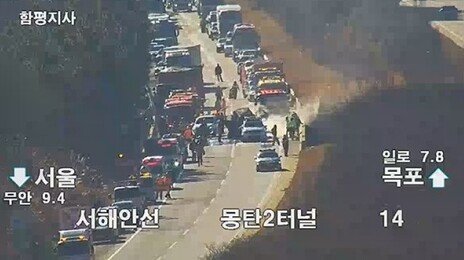공유하기
[뉴욕타임스로 논술을 잡아라]Scarcity, Mother of…
-
입력 2006년 10월 17일 03시 05분
글자크기 설정
August 10, 2006 / By Stephen L. Sass 1)
■칼럼
In the wake of * the closure of a BP 2) oil field in Prudhoe Bay, Alaska, oil prices shot up to $77 a barrel on Wednesday, and the chorus of doomsayers * concerned about the dire consequences of our fossil fuel dependency has reached a crescendo *. If oil hits $100 a barrel, the impact on our economy and lifestyle could be catastrophic, the handwringers * warn. But while such a specter seems novel and terrifying, it is in fact familiar and useful.
Throughout history, shortages of vital resources have driven innovation*, and energy has often starred in these technological dramas. The desperate search for new sources of energy and new materials has frequently produced remarkable advances that no one could have imagined when the shortage first became evident.
Consider the transition from the use of bronze to iron in making tools and weapons, which occurred around the 12th century B.C. 3) Early in the second millennium B.C., iron was known as the stuff of meteorites. It was rare and highly prized: if you wanted to give a gift to a pharaoh * or a king you didn’t give a gold dagger but an iron one. But when the eastern Mediterranean fell short of tin from which to make bronze, a technological revolution occurred. Artisans learned to extract metallic iron from iron-rich materials by heating with charcoal (a process called smelting), which caused the price of iron to fall by a factor of 80,000 over 1200 years. The Iron Age had begun.
Later, in Britain in the 1600’s, another shortfall would drive still more invention. As the British empire expanded, demands increased on the island nation’s natural resources, particularly its forests. The British used so much wood for heating homes, building the ships of its mighty fleet and making charcoal to smelt iron and to fuel other industrial processes that there was eventually a shortage that has been called a “timber famine” in England.
Wood shortages drove the use of coal. But coal had never been the choice fuel for smelting iron because it contains sulfur, which renders iron brittle* . Indeed, King James II of Scotland was killed in 1460 by an exploding cannon fashioned * from brittle iron. Abraham Darby, the owner of an iron foundry at Coalbrookdale along the Severn River in the west of England, solved this problem when he developed a process to drive the unwanted impurities from coal, producing coke 4) in 1709. Coke was so cheap that Darby could sell cast-iron pots and kettles at prices accessible to common folk.
The story goes on. In order to dig for coal, deep mine shafts were sunk, and these tended to flood. The steam engine was first developed to pump out * the mines. The steam engine in turn * became the primary new source of power for the Industrial Revolution. All of which came about * because of a shortage of wood. Eventually, this cycle of shortage and invention would lead to the canal system in England, railroads and thermodynamics 5).
The bottom line * is that the very process of developing alternative sources of energy to replace fossil fuels may yield benefits beyond our imagining. But if instead we fail to innovate, the consequences could be devastating.
On a recent drive across the country, my wife and I visited a 1000-year-old Indian village that is being unearthed slowly in Mitchell, S.D. The village existed for less than 100 years, because its inhabitants ran out of the wood they used for fuel and to construct their homes. Forced to migrate to the Missouri River, these Indians became the Mandan 6). Many years later, Lewis and Clark 7) wintered with the Mandan at the start of their long expedition west.
If there is anything to be learned from history, it’s that we need to face the harsh reality of fossil fuel scarcity and begin something like a Manhattan project 8) to develop clean, economical, and preferably sustainable * new sources of energy. Just as importantly, we need to innovate on the side of conservation * and efficiency. The Indians of Mitchell were able to move to the Missouri, but if we use up*, or more realistically, greatly deplete, the resources of this earth, we have no place to go.
■주해
1) 코넬대 재료공학과 교수. ‘문명의 물질 : 구석기시대에서 실리콘 시대까지의 재료와 인간 역사’ 라는 저서가 있다.
2) 영국의 브리티시석유회사(The British Petroleum Company). 알래스카 프루도 만과 북해의 영국 관할지역에 상당 이권을 갖고 있다. 1987년 스탠더드석유회사를 인수 합병해 세계에서 가장 큰 석유회사가 됐다.
3) 1836년 덴마크의 고고학자 Christian Jurgensen Thomsen(1788∼1865)은 인류가 사용한 도구에 따라 선사시대를 석기시대→청동기시대→철기시대로 구분했다.
4) 점결성탄(粘結性炭) 등을 고온에서 건류한 다공질(多孔質)의 고체 연료. 제철용 주물용 도시가스 및 화학 공업용 연료로 쓰임.
5) 열 일 온도 에너지 사이의 관계에 대한 체계적인 연구 분야.
6) 미국 하트 강과 리틀미주리 강 사이 미주리 강 유역에 살던 인디언. 1750년에는 9개의 큰 마을이 있었으나 천연두와 콜레라가 발생해 1800년 마을이 2개로 줄어들었다. 20세기 후반 노스다코타 주 포트버솔드 보호구역에는 모두 350명이 살고 있다.
7) 메리웨더 루이스 대위와 윌리엄 클라크 중위는 토머스 제퍼슨 대통령의 지시로 미국 최초로 태평양 연안까지 육로로 가서 돌아오는 탐험(1804∼1806)을 이끌었다. 29∼33세의 탐사대원 40여 명은 1804년 11월경 미주리 강의 험한 벼랑을 넘어 노스다코타에 요새를 건설하고 친절한 만단족(族) 인디언과 더불어 편안한 겨울을 보냈다. 1806년 9월 23일 탐험을 마치고 세인트루이스에 도착했다. 루이스와 클라크는 탐험을 하는 동안 풍부한 정보가 담긴 엄청난 분량의 일지와 지도를 작성했다.
■어휘
*in the wake of=Following directly on; as a consequence of
*doomsayer=One who predicts calamity at every opportunity
*crescendo=The climactic point or moment after such a progression
*handwringer=a person who clasps and squeezes the hands in an excessive expression of distress
*innovation=The act of introducing something new
*pharaoh=A king of ancient Egypt;A tyrant
*brittle=Likely to break, snap, or crack, as when subjected to pressure
*pump out=To remove the water from: pump out a flooded basement
*in turn=In the proper order or sequence
*come about=To take place; happen
*bottom line=The main or essential point
*sustainable=Capable of being continued with minimal long-term effect on the environment 예문) sustainable agriculture
*conservation=The protection, preservation, management, or restoration of wildlife and of natural resources such as forests, soil, and water.
*use up=To consume completely: used up all our money.
■돋보기
20세기 산업문명은 석유를 기초로 하고 있다고 해도 지나친 말이 아닙니다. 인류가 쓰는 에너지의 3분의 1 이상이 석유입니다. 그러나 석유는 유한(有限)한 자원입니다. 석유자원이 언제 고갈될 것인지에 관해 논란이 있지만, 머지 않은 장래에 고갈 위기가 닥칠 것이라는 전망이 우세합니다.
중국 인도 브라질의 경제성장으로 인한 석유 수요의 급증, 중동 정세 불안, 그리고 석유자원의 고갈 가능성이 유가를 끌어올리고 있습니다. 4년 사이 유가는 배럴당 무려 3배가량 올랐습니다. 배럴당 100달러 시대에 대비해야 한다는 말도 나옵니다.
인류가 직면한 가장 심각한 위기가 바로 기후변화입니다. 석유를 비롯한 화석연료는 이산화탄소를 발생시켜 지구 온난화를 가속시키고 있습니다. 기상 이변은 지구 온난화와 밀접한 관련이 있습니다. 바닷물 온도가 0.5도 높아질수록 폭풍의 풍속은 3%씩 늘어난다고 합니다.
석유는 마약과도 같습니다. 사용량을 줄이면 금단현상이 나타나고 부작용이 있어도 계속 쓰게 됩니다. 석유중독에서 벗어나는 것이 시급한 과제입니다. 석유를 펑펑 쓰던 미국도 조지 W 부시 대통령이 연두교서에서 “미국의 석유 중독증을 바꾸겠다”고 선언했습니다.
이 글의 필자는 주석의 부족으로 청동기 시대가 끝나고 철기시대 왔고, 나무의 부족으로 석탄이 이용되기 시작했고 엉뚱하게 증기기관의 발명을 불러왔다고 지적했습니다. 부족은 위기가 아니라 새로운 기술혁신의 어머니라는 것이지요.
브라질에서는 옥수수와 사탕수수의 줄기에서 추출한 에탄올을 주유소에서 팔고 있습니다. 에탄올의 연비는 휘발유의 70%이지만 가격이 휘발유의 절반가량밖에 되지 않아 자동차 연료의 40%를 에탄올로 대체했습니다. 식물에서 추출한 에너지가 상용화하면 에너지 권력이 중동에서 열대지방으로 옮아가리라고 예측하는 학자들도 있습니다.
☞자세한 주해는 이지논술 사이트를 참고하세요
황호택 논술위원
뉴욕타임스 >
-

이원홍의 스포트라이트
구독
-

오늘의 운세
구독
-

오은영의 부모마음 아이마음
구독
-
- 좋아요
- 0개
-
- 슬퍼요
- 0개
-
- 화나요
- 0개
![[뉴욕타임스로 논술을 잡아라]The Culture Of Nations](https://image.donga.com/donga_v1/images/img_default.png)



댓글 0